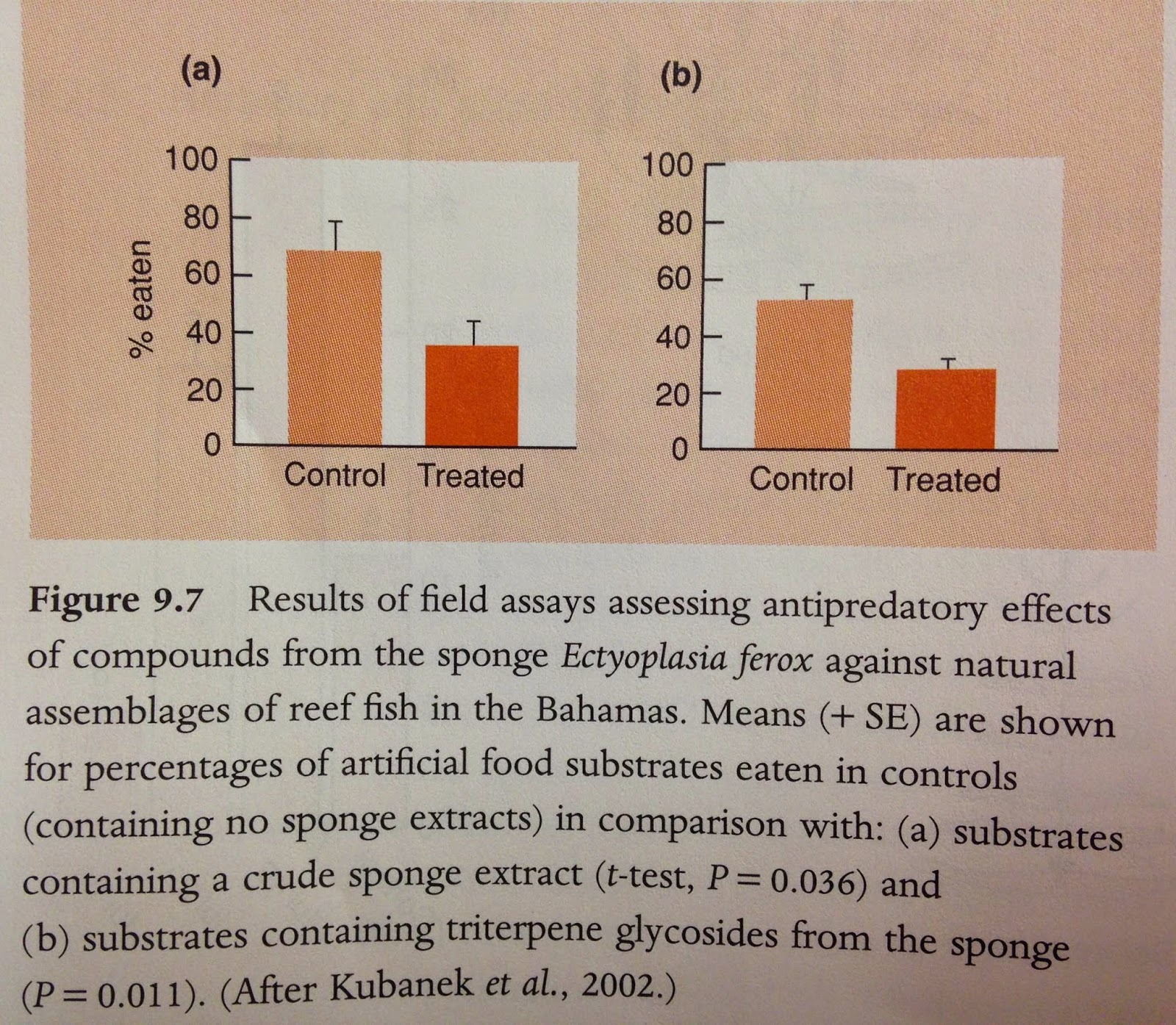A sponge skeleton consists of an organic component (collagen protein) and mineral spicules. Spicules function for support as well as for defense.

In modular animals, chemical defenses are vital for they can not escape from their prey.
Triterpene glycosides are a chemical compound found in many Caribbean sponges.
Study on the left, presented sponges in a natural predation setting. However, control groups were fed no extract of triterpene glycoside. The treated sponges were given the chemical compound extract.
% of sponges eaten by predators were significantly less in treated sponges
Also, treated sponges had an adverse affect on organisms that can overgrow their area (allelopathy)
No comments:
Post a Comment